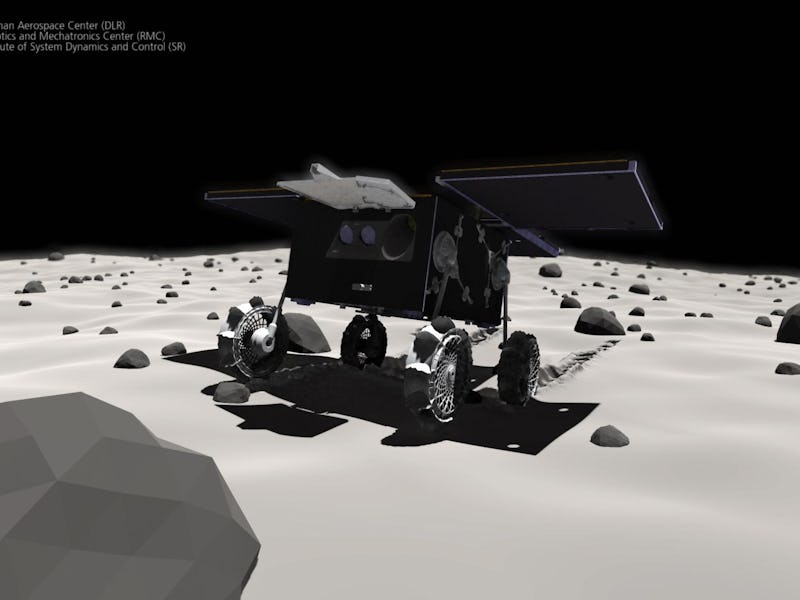To land on a Martian moon, Japan is going to drop it like it's hot
Drop tests are currently underway at a lab facility in Germany.

In the year 2024, the Japan Aerospace Exploration Agency (JAXA) will launch a robot space probe aimed for the moons of Mars.
The probe is part of the upcoming Martian Moons eXploration (MMX) mission. It will carry a small rover onboard to explore the Martian moon Phobos for three months. It will also collect samples, and return them to Earth.
But before the rover begins its journey to space, the team behind the mission need to ensure it can land on this rather potato-like, bumpy moon. And to make that landing as smooth as possible, the researchers plan to just... drop it.
The initial tests are underway at the German Aerospace Center in Bremen, Germany.
Using a preliminary model of the 25-kilogram rover, engineers have been drop testing the MMX mockup from a height of five centimeters. To make the tests more realistic, the team are dropping the rover at different angles onto a changeable surface to simulate the rover's real descent onto the surface of Phobos.
During the actual mission, the rover will have to free fall approximately 40 to 100 meters to the moon's surface. But since Phobos only has about two thousandths of Earth's gravity at its surface, the intensity of the impact is about the same, even from the different heights.
Engineers are dropping the mock-up rover in a free fall to simulate its landing on the moon Phobos.
"The exact location of the landing on the surface of Phobos is a matter of chance and we are using these analyses to prepare for the various possible scenarios," Michael Wrasmann, an engineer at the DLR Institute of Space Systems, said in a statement.
Phobos' surface is largely dusty, and the moon has multiple impact craters on its surface. One concern is that the rover will land at a certain angle and possibly hit a rock.
To simulate this potential landing surface, the engineers are using two hemispheres with diameters of two and nine centimeters, which are placed in a bed of sand, as well as a flat plate.
After the landing, the rover must endure Phobos extreme temperatures, too.The moon heats up from -150 to +50 degrees Celsius from day to night over a period that lasts just over seven hours. So the interior of the rover must maintain a relatively constant temperature to overcome the extreme change of temperatures on the outside.
To the moon and back — The purpose of the MMX mission is to determine whether Mars' moons Phobos and Deimos are actually asteroids that have been captured by Mars' gravitational tug, or if they formed in the aftermath of a massive object colliding with the Red Planet.
The space probe will enter Mars' orbit in the year 2025, and the rover is set to land on Phobos in the year 2026 or 2027. The rover will explore Phobos for approximately 100 days, collecting samples from the unusual moon. Meanwhile, the space probe will conduct flybys of Deimos while also studying Mars' atmosphere.
Phobos is the larger of the two moons, measuring at 17 by 14 by 11 miles in diameter, and is sort of shaped like a potato. This odd moon orbits Mars three times a day, but it ultimately on a collision course with the Red Planet.
Every hundred years, the moon inches closer to Mars by six feet. Eventually, it will either crash into Mars or break apart, and form a ring of debris around the planet.
Phobos has a rather odd shape, and its surface has been pounded by several impacts.
In the 1970's, Russia set out to land on Phobos, but scientists deemed the possibility of a successful landing as impossible given its low and uneven gravity. Instead, the Soviet space program sent probes to the Martian moon.
Communication was lost with the spacecraft and it was left stranded in Earth's orbit. Hopefully MMX will be a little more successful.
This article was originally published on